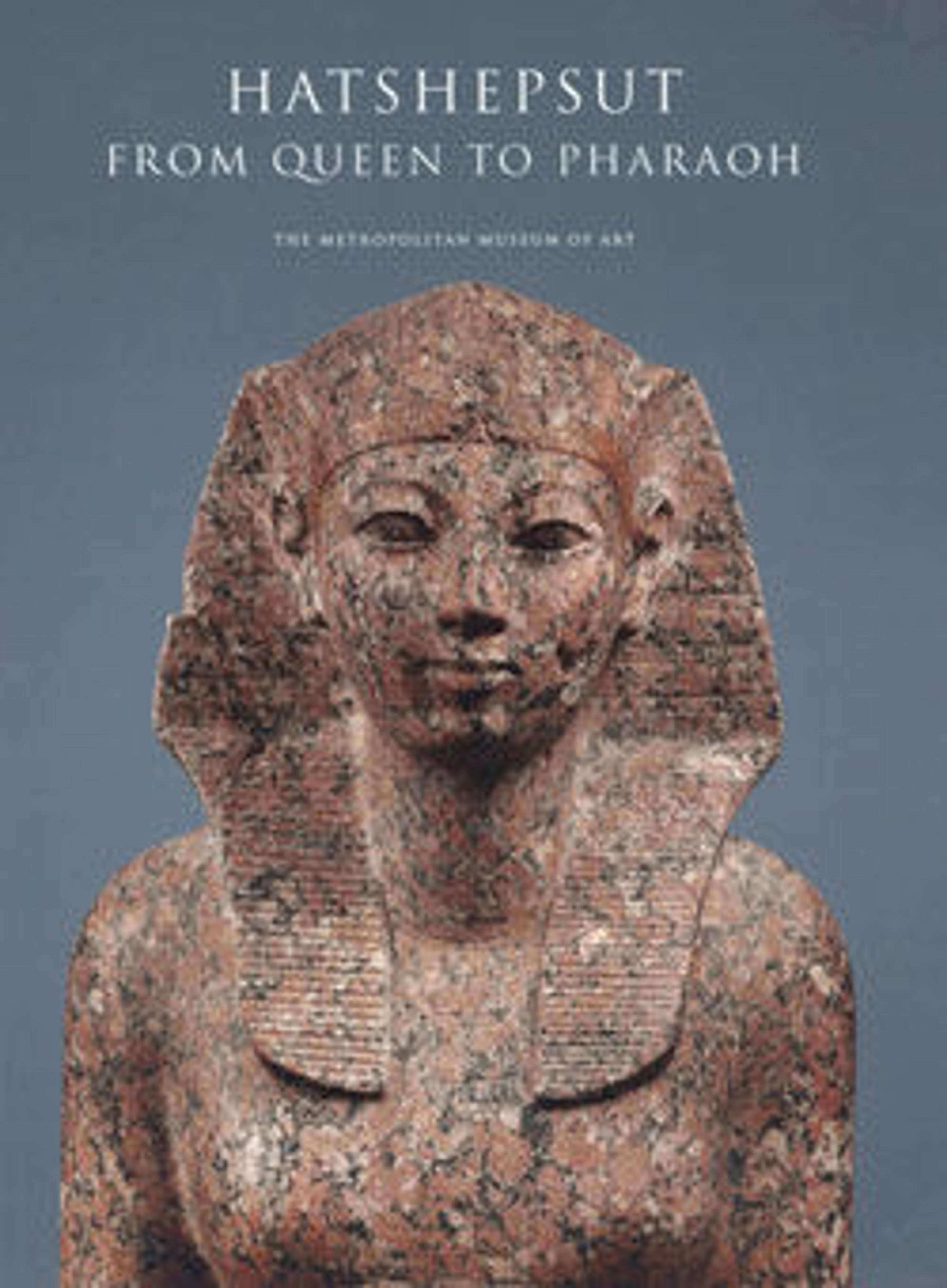Dish Inscribed with the Throne Name of Thutmose II
In 1936 the Metropolitan Museum's Egyptian Expedition discovered a small sealed doorway on the hillside beneath Senenmut's tomb (TT 71). Inside lay four coffins surrounded by boxes, baskets, and pottery. This turned out to be one of the few well-preserved private burials from the early New Kingdom. Two coffins were inscribed for Hatnefer and Ramose, Senenmut's mother and father. Two others contained six anonymous mummies, almost certainly members of the same family.
The chief beneficiary of the tomb was Senenmut's elderly mother, who lived to benefit from her son's rise at court. At her death, Senenmut seems to have transferred the burials of other family members to Thebes, where their spirits could reap the benefits of the grave goods he was able to provide for Hatnefer.
The entrance of the small tomb was sealed with a large rock and covered by loose chip from the construction of Senenmut's chapel on the hillside above. Several inscriptions from the tomb date to regnal year 7. This indicates that the tomb was sealed in the seventh year of the joint reign of Hatshepsut and Thutmose III. One amphora bears a stamp referring to Hatshepsut as the "Good Goddess." This is generally regarded as the earliest attestation of Hatshepsut as king.
This small bowl is inscribed with the throne name of Hatshepsut’s husband (and half-brother), Thutmose II – it reads “The Good God, Aakheperenre, Given Life.” It was found in coffin number 3 which contained the burial of two young women and two children. The presence of the bowl suggests that at least one of the occupants was originally buried during the reign of Thutmose II.
The chief beneficiary of the tomb was Senenmut's elderly mother, who lived to benefit from her son's rise at court. At her death, Senenmut seems to have transferred the burials of other family members to Thebes, where their spirits could reap the benefits of the grave goods he was able to provide for Hatnefer.
The entrance of the small tomb was sealed with a large rock and covered by loose chip from the construction of Senenmut's chapel on the hillside above. Several inscriptions from the tomb date to regnal year 7. This indicates that the tomb was sealed in the seventh year of the joint reign of Hatshepsut and Thutmose III. One amphora bears a stamp referring to Hatshepsut as the "Good Goddess." This is generally regarded as the earliest attestation of Hatshepsut as king.
This small bowl is inscribed with the throne name of Hatshepsut’s husband (and half-brother), Thutmose II – it reads “The Good God, Aakheperenre, Given Life.” It was found in coffin number 3 which contained the burial of two young women and two children. The presence of the bowl suggests that at least one of the occupants was originally buried during the reign of Thutmose II.
Artwork Details
- Title: Dish Inscribed with the Throne Name of Thutmose II
- Period: New Kingdom
- Dynasty: Dynasty 18, early
- Reign: reign of Thutmose II
- Date: ca. 1492–1473 B.C.
- Geography: From Egypt, Upper Egypt, Thebes, Sheikh Abd el-Qurna, Tomb of Hatnefer and Ramose (below TT 71), coffin III, MMA excavations, 1935–36
- Medium: Faience, paint
- Dimensions: H. 1.8 cm (11/16 in.); Diam. 8 cm (3 1/8 in.)
- Credit Line: Rogers Fund, 1936
- Object Number: 36.3.9
- Curatorial Department: Egyptian Art
More Artwork
Research Resources
The Met provides unparalleled resources for research and welcomes an international community of students and scholars. The Met's Open Access API is where creators and researchers can connect to the The Met collection. Open Access data and public domain images are available for unrestricted commercial and noncommercial use without permission or fee.
To request images under copyright and other restrictions, please use this Image Request form.
Feedback
We continue to research and examine historical and cultural context for objects in The Met collection. If you have comments or questions about this object record, please complete and submit this form. The Museum looks forward to receiving your comments.
